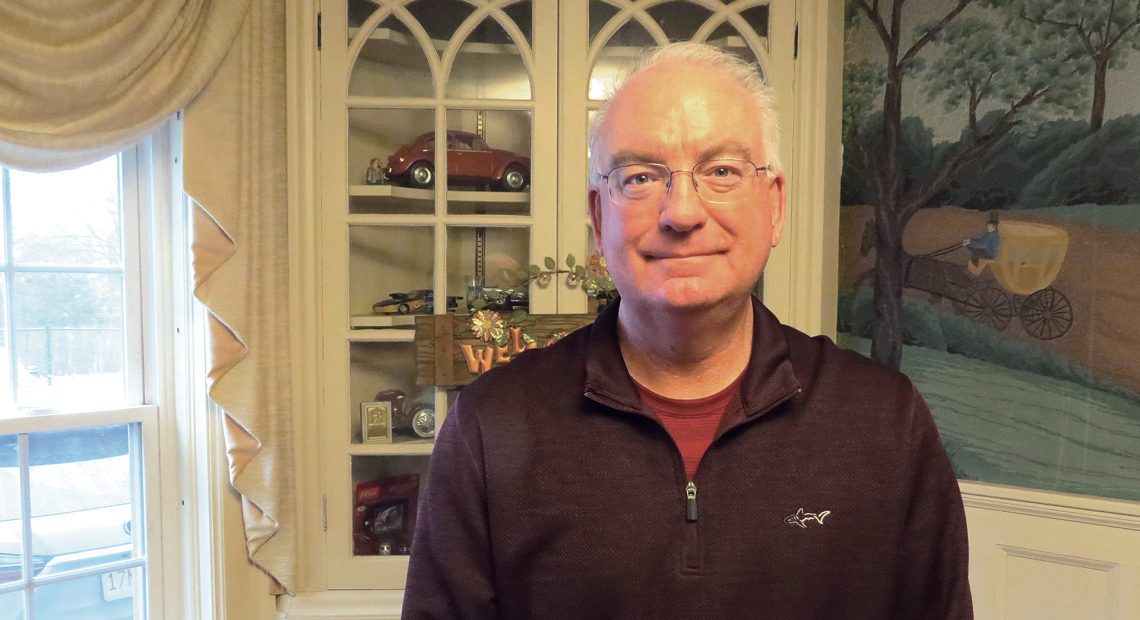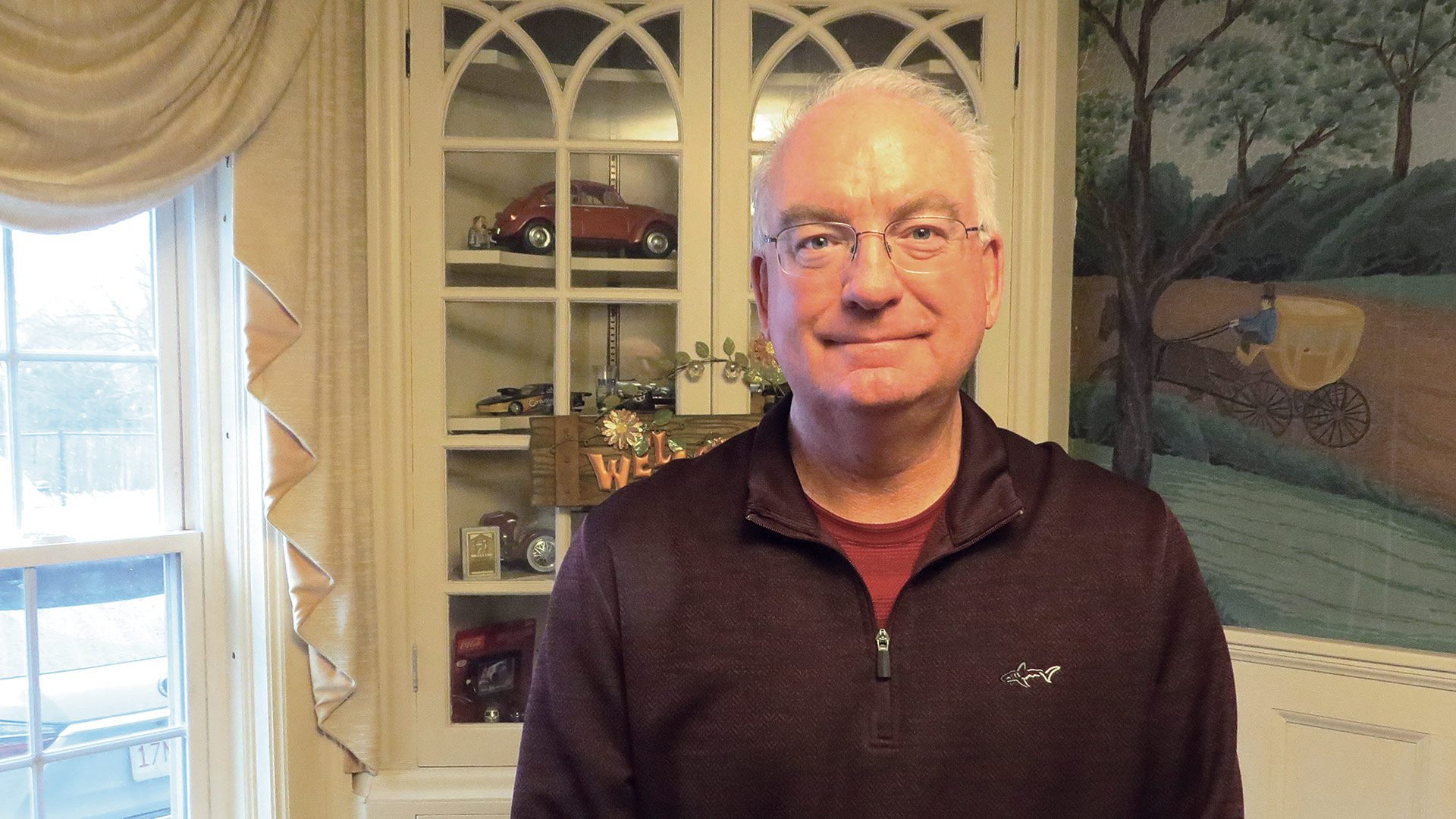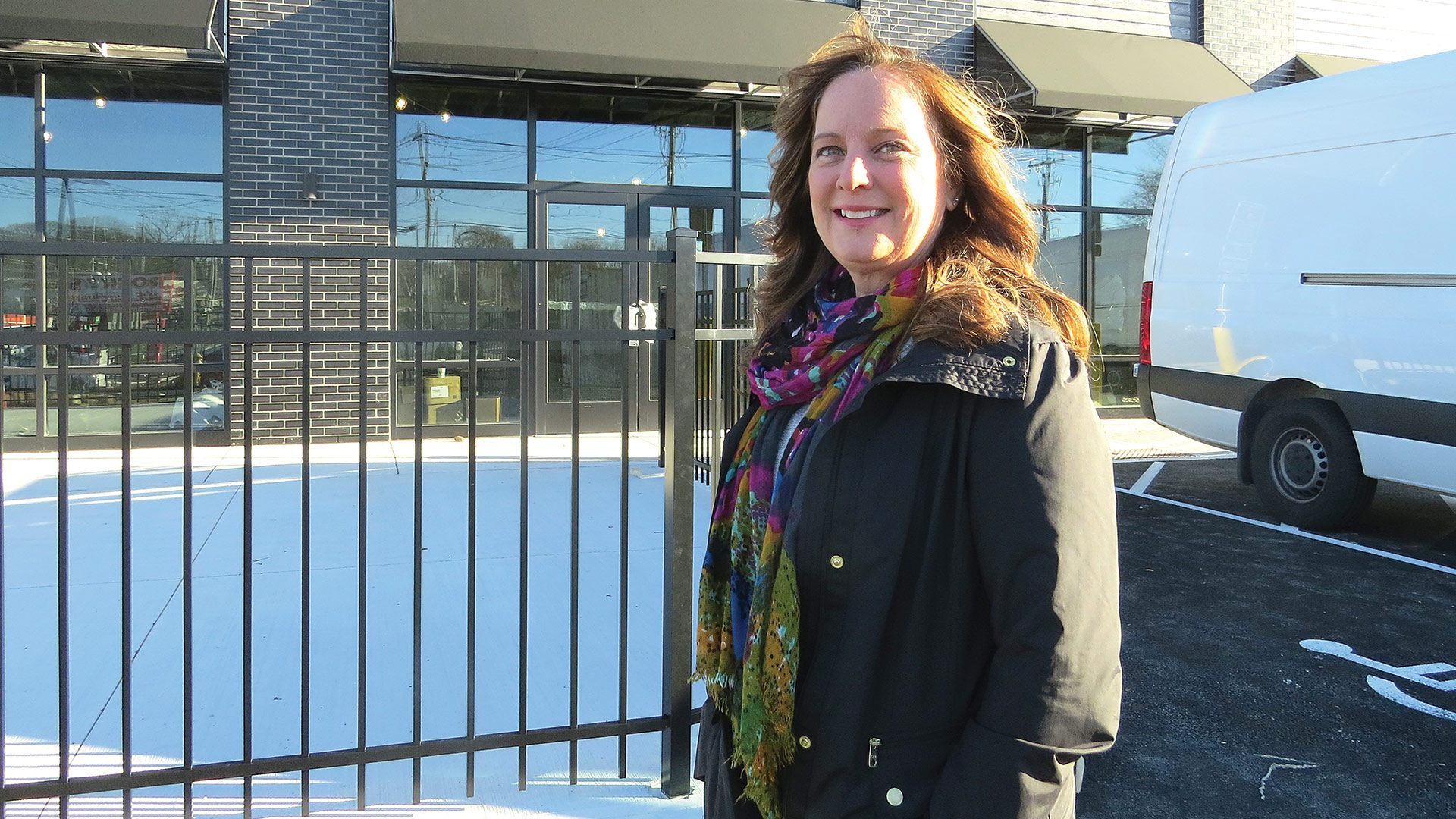
For Agawam, It’s Back to the Future
Community Spotlight

Chris Johnson will be returning to the mayor’s office in January 24 years after serving as the city’s first mayor.
Chris Johnson was elected Agawam’s first mayor back in November 1989.
He then served five two-year terms before returning to his real-estate law practice in 2000. In the years that followed, he stayed active and involved in the community where he was born and raised, serving several terms on the City Council, where he likely would have stayed had Mayor William Sapelli, former superintendent of schools in this city that calls itself a town, declined the opportunity to seek another term.
With that decision, and with several key issues facing this community — especially movement toward renovating or, preferably (in the view of most involved) replacing its high school — Johnson sought a return to the corner office. And last month, voters gave him a hard-earned victory over his challenger, fellow City Councilor Cecelia Calabrese.
“They say that once it’s in your blood, it’s hard to get it out,” Johnson said. “I care deeply about the community I grew up in and raised my family in, and we have a few significant issues that we’re facing over the next year or two. And I wanted to make sure they got a fair shake.”
Indeed, Johnson told BusinessWest that, as he returns to City Hall, there are several matters that will have his full attention — everything from a pressing need to create more housing in several categories to bringing roughly 25 years of work to create recreational facilities at the former Tuckahoe Turf Farm in Feeding Hills to a sucessful conclusion, to efforts to redevelop the former Games and Lanes property on Walnut Street Extension.
“I work closely with the mayors, as well as the state senators and representatives, to be sure that we’re providing a platform for the small businesses in Agawam, and be that middle person to ensure that the businesses are able to have their voices heard.”
But it is the high school that will be priority one, he said, adding that, after a few failed attempts to gain traction from the Massachusetts School Building Authority (MSBA), the community is moving closer to getting into the pipeline for state funding for a new school, and city residents will likely have the opportunity to vote on the matter as early as next spring.
In his view, building a new high school, even one with a projected $230 million price tag, will be more practical and cost-effective than trying to again renovate and add onto the current structure, built in the mid-’50s.
Meanwhile, a new high school will certainly help the community effectively compete with neighboring cities and towns for young professionals and businesses alike.
“It’s been 50 years since we’ve built a school,” he said, referencing the middle school, built in 1973. “We’ve gone a long time without making a major investment. I’ve been in the real-estate world since I left the mayor’s office 24 years ago; I’m a real-estate attorney, and I have lots of friends who are Realtors and brokers, and they all say that, when it comes to new families moving into the area, one of the first things they want to know is what the school system is like.”

Robin Wozniak stands in front of the new Starbucks set to open in Agawam.
Robin Wozniak, president of the West of the River Chamber of Commerce, who serves on the committee studying options for the high school, agreed. “It’s imperative that we keep up with technology and provide facilities that are state-of-the-art,” she said. “We have to remain competitive with our neighbors.”
Beyond the high-school project are other pressing issues in town, as well as signs of progress, she said, noting, among them, the highly anticipated opening of a Starbucks in a lot at the corner of Main and Suffield streets, being developed by the Colvest Group. The store is in the final stages of construction, she said, and it will be an important addition to that section of town just over the Morgan-Sullivan Bridge from West Springfield.
With the acquistion by Colvest of a small parcel on the edge of the neighboring Town Hall parking lot, there is room for additional development on the site, Wozniak said, noting that an urgent-care clinic and a fast-food restaurant have been among the rumored possibilities.
Meanwhile, she’s looking forward to working with Johnson to bolster the chamber’s role as a liaison between City Hall and the business community, making sure the wants and needs of the former are understood by the latter.
“We’re trying to identify some parcels for some creative housing concepts to try to see if we can get some more affordable-housing opportunities, if not subsidized affordable-housing opportunities.”
“I work closely with the mayors, as well as the state senators and representatives, to be sure that we’re providing a platform for the small businesses in Agawam, and be that middle person to ensure that the businesses are able to have their voices heard,” she said.
For this installment of its Community Spotlight series, BusinessWest turns the lens on Agawam, a community looking to transfer some unresolved issues to the proverbial done pile in the months and years to come.
Room for Improvement
As he talked about the current high school, a facility he attended in the ’70s and knows from many different vantage points, Johnson compared it to a “beautiful ’55 Chevy that we kept in really good condition.”
In other words, it still purrs, and it’s still somewhat easy on the eyes. But it is simply not suited for these times.
“It’s going to need significant work over the next five to 15 years, and no matter how much work you do to it, it’s not cost-effective to turn it into a new, modern vehicle,” he said, adding that the relatively good condition of the current high school actually hurt the town to some extent because the MSBA put other communities with more pressing needs ahead of Agawam in the competition for school-building funds.
But even the state has come around to the notion that the building needs to be replaced, said Johnson, adding that the MSBA board of directors recently voted to move the project to what’s known as schematic design.
The state would likely pick up $100 million of the total price tag, leaving the community to come up with the rest, he said, noting that a debt-exclusion override — something the town has never before sought from the voters — would likely be needed. And Johnson, like other elected officials, is leaning strongly toward putting the matter on the ballot.
But while the high school is the predominent issue facing the community, there are others, he noted, citing the ongoing work to convert the former HUB Insurance building on Suffield Street into a new police station, as well as continued progress on work to convert the former Tuckahoe Turf Farm, nearly 300 acres the town has owned for more than 20 years, into passive recreation.
“The other need is at the other end of the spectrum, the young people who have grown up in Agawam; they’re young adults out in the work world trying to find housing opportunities so they can stay in Agawam.”
This includes hiking paths, picnic areas, and other facilities, he said, noting that, roughly a year ago, town leaders approved the borrowing of nearly $4 million to build a road, repair the dam and culverts on the property, and create a parking lot.
That work continues, said Johnson, adding that funding has also been received from the state, as well as from Tennessee Gas, which directed funds it has earmarked for conversation projects to work on the dam and pond on the property.
What the initiative needs is a name, he noted, as it has always been referred to simply as the ‘former Tuckahoe site,’ and the town reconizes the need for something new and fresh. “We’re working on it,” he added.
Likewise, this community, like most in the region, is working to address an ongoing housing shortage.
“We’re trying to identify some parcels for some creative housing concepts to try to see if we can get some more affordable-housing opportunities, if not subsidized affordable-housing opportunities,” he explained.
Agawam at a Glance
Year Incorporated: 1855
Population: 28,692
Area: 24.2 square miles
County: Hampden
Residential Tax Rate: $14.54
Commercial Tax Rate: $27.54
Median Household Income: $49,390
Family Household Income: $59,088
Type of government: Mayor; City Council
Largest Employers: OMG Inc., Agawam Public Schools, Six Flags New England
* Latest information available
“We have two glaring needs, and they’re not easy to address, unfortunately. One is seniors who have raised families in Agawam; they’re living in single-family houses, and they want that downsizing opportunity,” he went on, noting that there is one over-55 condomimum project wrapping up, but the units come with price tags above what many can afford. “The other need is at the other end of the spectrum, the young people who have grown up in Agawam; they’re young adults out in the work world trying to find housing opportunities so they can stay in Agawam.”
As for the former Games and Lanes property, long an eyesore and an environmental nightmare, and then a vacant lot used only for parking at Big E time, Johnson said at least one developer has expressed interest.
The broader Walnut Street Extension corridor was rezoned to allow mixed use, he noted, adding that the preferred reuse of the Games and Lanes property would be development that entailed retail and office space on the ground floor and residential units on the floors above.
Bottom Line
Much has happened in this town since Johnson last occupied the corner office at the start of this century.
But some issues, including the high school, housing, and the Tuckahoe Turf Farm, were talked about the first time he patrolled Town Hall.
He ran again to bring resolution to those issues and “give them a fair shake,” as he put it, and as he prepares to return to office, there is an expectation of real progress on these and many other fronts.




